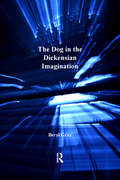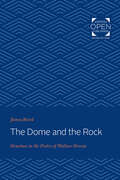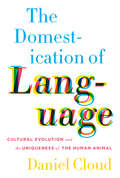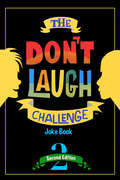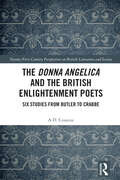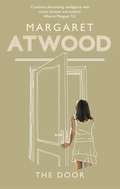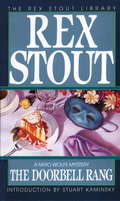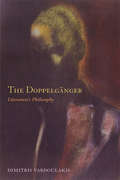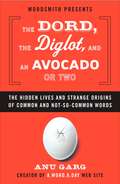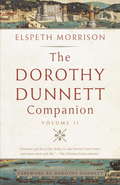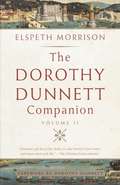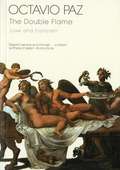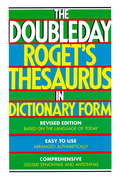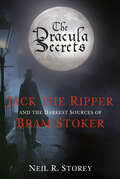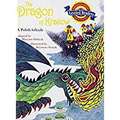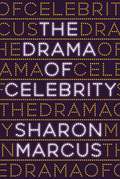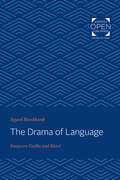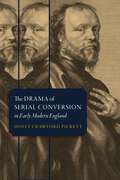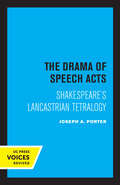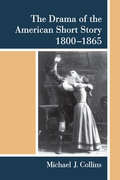- Table View
- List View
The Dog in the Dickensian Imagination (The Nineteenth Century Series)
by Beryl GrayFascinated by them, unable to ignore them, and imaginatively stimulated by them, Charles Dickens was an acute and unsentimental reporter on the dogs he kept and encountered during a time when they were a burgeoning part of the nineteenth-century urban and domestic scene. As dogs inhabited Dickens’s city, so too did they populate his fiction, journalism, and letters. In the first book-length work of criticism on Dickens’s relationship to canines, Beryl Gray shows that dogs, real and invented, were intrinsic to Dickens’s vision and experience of London and to his representations of its life. Gray draws on an array of reminiscences by Dickens’s friends, family, and fellow writers, and also situates her book within the context of nineteenth-century attitudes towards dogs as revealed in the periodical press, newspapers, and institutional archives. Integral to her study is her analysis of Dickens’s texts in relationship to their illustrations by George Cruikshank and Hablot Knight Browne and to portraiture by late eighteenth- and nineteenth-century artists like Thomas Gainsborough and Edwin Landseer. The Dog in the Dickensian Imagination will not only enlighten readers and critics of Dickens and those interested in his life but will serve as an important resource for scholars interested in the Victorian city, the treatment of animals in literature and art, and attitudes towards animals in nineteenth-century Britain.
The Dome and the Rock: Structure in the Poetry of Wallace Stevens
by James BairdOriginally published in 1968. In The Dome and the Rock: Structure in the Poetry of Wallace Stevens, James Baird traces the process of Wallace Steven's Grand Poem and the total structure that it accomplished in language. In the words of Professor Baird, "The full art of Stevens is organized with architectural precision. The shape of the mind becomes a building, the framework of which is founded in a willed symmetry of design." In The Dome and the Rock, James Baird exposes the capacity of Wallace Stevens to design his poetry in a manner similar to an architect, and he "reveals the craftsmanship of [Wallace's] acts as builder."
The Domestication of Language
by Daniel CloudA provocative investigation into the making of human languages and the exceptional nature of human adaptation.
The Domestication of Language: Cultural Evolution and the Uniqueness of the Human Animal
by Daniel CloudA provocative investigation into the making of human languages and the exceptional nature of human adaptation.
The Domestication of Language: Cultural Evolution and the Uniqueness of the Human Animal
by Daniel CloudLanguage did not evolve only in the distant past. Our shared understanding of the meanings of words is ever-changing, and we make conscious, rational decisions about which words to use and what to mean by them every day. Applying Charles Darwin's theory of "unconscious artificial selection" to the evolution of linguistic conventions, Daniel Cloud suggests a new, evolutionary explanation for the rich, complex, and continually reinvented meanings of our words.The choice of which words to use and in which sense to use them is both a "selection event" and an intentional decision, making Darwin's account of artificial selection a particularly compelling model of the evolution of words. After drawing an analogy between the theory of domestication offered by Darwin and the evolution of human languages and cultures, Cloud applies his analytical framework to the question of what makes humans unique and how they became that way. He incorporates insights from David Lewis's Convention, Brian Skyrms's Signals, and Kim Sterelny's Evolved Apprentice, all while emphasizing the role of deliberate human choice in the crafting of language over time. His clever and intuitive model casts humans' cultural and linguistic evolution as an integrated, dynamic process, with results that reach into all corners of our private lives and public character.
The Don't Laugh Challenge - 2nd Edition: Children's Joke Book Including Riddles, Funny Q&A Jokes, Knock Knock, and Tongue Twisters for Kids Ages 5, 6, 7, 8, 9, 10, 11, and 12 Year Old Boys and Girls; Stocking Stuffers, Christmas Gifts, Travel Games, Gift Ideas (Don't Laugh Challenge Series #2)
by Billy BoyBACK BY POPULAR DEMAND! BEST SELLER FOR KIDS JOKE BOOKS! Why shouldn't you download the iceberg app? It'll sync your phone! Laughter is medicine to the soul - which is exactly what your kids will be doing with our Don’t Laugh Challenge - 2nd Edition! The challenge is for the players to sit facing each other at eye level and take turns reading jokes to each other. Each laugh = 1 point! First person to 3 points is crowned the Don’t Laugh MASTER! This book is filled with hours of fun with friends or family and perfect for ages 5 and up! Give it as a gift or get your own and let the laughter begin! Game on!
The Donna Angelica and the British Enlightenment Poets: Six Studies from Butler to Crabbe (21st Century Perspectives on British Literature and Society)
by A.D. CousinsThe aim of the book is to propose new interpretations of poets who are among the most valued and discussed in the British Enlightenment. In fulfilling its aim, the book covers English poetry—and intellectual history—from the Restoration to the later eighteenth century. It examines how the myth of the donna angelica (the angelic lady), ancient in origin but given its best-known form within the medieval literature of fin’amor, lives on beyond the Middle Ages and the Renaissance into the Enlightenment. To be more precise, it studies how some major Augustan poets appropriate and recreate what, for convenience, can be called the donna angelica topos (or, the angelic lady motif). They do so for a great many reasons linked with quite diverse circumstances. Nevertheless, the myth’s intellectual richness, emotional intensity, and inherent ambiguities mean that it offers each of them a powerful way for articulating, interpreting, exploring refractions of eros—whether singly or diversely directed, concerned with sexuality or spirituality, informing personal or public experience. The myth has as many faces, so to speak, as does desire; it is one and yet many. Thus, the book pursues a particular fable of eros that appears in a multiplicity of texts in a multiplicity of guises. It studies how some of the most interesting poets from Dryden to Crabbe bring the angelic lady motif into modernity.
The Door: Poems
by Margaret AtwoodBy the author of The Handmaid's Tale and DearlyTHE DOOR is Margaret Atwood's first book of poetry since the 1995 MORNING IN THE BURNED HOUSE. Its lucid yet urgent poems range in tone from lyric to ironic to meditative to prophetic, and in subject from the personal to the political viewed in its broadest sense. They investigate the mysterious writing of poetry itself, as well as the passage of time and our shared sense of mortality. As the New York Times has said, 'Atwood's poems are short, glistening with terse, bright images. . . ' A brave and compassionate book, THE DOOR interrogates the certainties that we build our lives on.'One of the best books by one of the best poets writing in English' TLS
The Doorbell Rang (Nero Wolfe #41)
by Rex StoutHired to help society widow Rachel Bruner foil bothersome Feds, Nero Wolfe and his able assistant Archie get in over their heads with highly trained G-men who are adept at bugs, tails, and threats.
The Doppelganger: Literature's Philosophy
by Dimitris VardoulakisThe Doppelgänger or Double presents literature as the "double" of philosophy. There are historical reasons for this. The genesis of the Doppelgänger is literature's response to the philosophical focus on subjectivity. The Doppelgänger was coined by the German author Jean Paul in 1796 as a critique of Idealism's assertion of subjective autonomy, individuality and human agency. This critique prefigures post-War extrapolations of the subject as decentred. From this perspective, the Doppelgänger has a "family resemblance" to current conceptualizations of subjectivity. It becomes the emblematic subject of modernity. This is the first significant study on the Doppelgänger's influence on philosophical thought. The Doppelgänger emerges as a hidden and unexplored element both in conceptions of subjectivity and in philosophy's relation to literature. Vardoulakis demonstrates this by employing the Doppelgänger to read literature philosophically and to read philosophy as literature. The Doppelgänger then appears instrumental in the self-conception of both literature and philosophy.
The Dord, the Diglot, and an Avocado or Two
by Anu GargFrom the creator of the popular A. Word. A. Day e-mail newsletter A collection of some of the most interesting stories and fascinating origins behind more than 300 words, names, and terms by the founder of WordSmith. org. Did you know:There's a word for the pleasant smell that accompanies the first rain after a dry spell? Petrichor, combining petros (Greek for stone) and ichor (the fluid that flows in the veins of Greek gods). An illeist is one who refers to oneself in the third person. There's a word for feigning lack of interest in something while actually desiring it: accismus. For any aspiring deipnosophist (a good conversationalist at meals) or devoted Philomath (a lover of learning), this anthology of entertaining etymology is an ideal way to have fun while getting smarter.
The Dorothy Dunnett Companion
by Elspeth MorrisonDorothy Dunnett has earned worldwide acclaim for the masterful blending of historical fact and imagination in her two series of novels set in brilliantly reconstructed fifteenth- and sixteenth-century landscapes.The Dorothy Dunnett Companion II is an encyclopedic resource that completes and expands the reach of the first Companion in documenting the historical and literary riches of Dunnett's Lymond Chronicles and House of Niccol novels. In this second guide, Elspeth Morrison not only covers the final three Niccol novels for the first time, but also provides a wealth of additional information about all of the earlier novels and highlights the links between the two now-completed series. Once again, she illuminates the real figures and events and the cultural and literary allusions Dunnett weaves into her works, translating foreign phrases and offering up fascinating background details, from the history of golf and the argot of galley slaves to the uses of puffins and polar bears. Together with the first Companion, The Dorothy Dunnett Companion II provides a complete and essential guide to the world of Lymond and Niccolo.From the Trade Paperback edition.
The Dorothy Dunnett Companion, Volume II
by Dorothy Dunnett Elspeth MorrisonTHE purpose of this Companion is to enhance the reader's appreciation and enjoyment of the novels of Dorothy Dunnett. Arranged alphabetically, it aims to provide an easily accessible but solidly researched background to the historical characters, allusions and references which underpin the fiction of the Lymond Chronicles and the House of Niccolò series. As with Volume I, the Companion does not attempt to analyse aspects of the Renaissance which are out with the novels.
The Double Flame: Love And Eroticism
by Octavio Paz Helen LaneIn this series of essays Paz explores the intimate connection between sex, eroticism, and love in literature throughout the ages. Rich in scope, The Double Flame examines everything from taboo to repression, Carnival to Lent, Sade to Freud, original sin to artificial intelligence. "Brimming with insight, thoughtfulness, and sincerity" (Kirkus Reviews).
The Doubleday Roget's Thesaurus in Dictionary Form
by Sidney I. Landau Ronald J. BogusA reference book that belongs on every desk--one of the handiest, best-organized, and most reliable thesauruses available, newly updated to reflect the American language of today.
The Dracula Secrets: Jack the Ripper and the Darkest Sources of Bram Stoker
by Neil R StoreySince the first publication of Dracula in 1897, there have been suggestions that the book’s protagonist is more closely associated with Jack the Ripper than a Transylvanian count. In The Dracula Secrets, historian Neil R. Storey undertakes an in-depth investigation of the sources used by Stoker during the writing of his seminal masterpiece. Painting an evocative portrait of Stoker, his influences, his friends and the London he frequented in the late nineteenth century, Storey explores how Stoker created Dracula out of the climate of fear that was created by the Whitechapel murders in 1888. Indeed he asks, did Stoker know Jack the Ripper personally and hide the clues to this terrible knowledge in his book? Having gained unprecedented access to the unique archive of one of Stoker’s most respected friends and the dedicatee of Dracula, Storey sheds new light on both Stoker and Dracula, and reveals startling new links between Stoker’s creation and the most infamous serial killer of all time.
The Dragon Drawing War: Targeting r Blends (Speech Bubbles 2)
by Melissa PalmerThis is a tale of two brothers, duelling to become a dragon drawing champion. Great skill and imagination must be used to become the victor! If you don’t succeed today, do not fear. There will be another war to fight tomorrow. This picture book targets /r/ blends and is part of Speech Bubbles 2, a series of picture books that target specific speech sounds within the story. The series can be used for children receiving speech therapy, for children who have a speech sound delay/disorder, or simply as an activity for children’s speech sound development and/or phonological awareness. They are ideal for use by parents, teachers or caregivers. Bright pictures and a fun story create an engaging activity perfect for sound awareness. Picture books are sold individually, or in a pack. There are currently two packs available – Speech Bubbles 1 and Speech Bubbles 2. Please see further titles in the series for stories targeting other speech sounds.
The Dragon of Krakow: A Polish folktale [Grade 3]
by Maryann Dobeck Krystyna StasiakNIMAC-sourced textbook
The Drama of Celebrity
by Sharon MarcusA bold new account of how celebrity worksWhy do so many people care so much about celebrities? Who decides who gets to be a star? What are the privileges and pleasures of fandom? Do celebrities ever deserve the outsized attention they receive?In this fascinating and deeply researched book, Sharon Marcus challenges everything you thought you knew about our obsession with fame. Icons are not merely famous for being famous; the media alone cannot make or break stars; fans are not simply passive dupes. Instead, journalists, the public, and celebrities themselves all compete, passionately and expertly, to shape the stories we tell about celebrities and fans. The result: a high-stakes drama as endless as it is unpredictable.Drawing on scrapbooks, personal diaries, and vintage fan mail, Marcus traces celebrity culture back to its nineteenth-century roots, when people the world over found themselves captivated by celebrity chefs, bad-boy poets, and actors such as the “divine” Sarah Bernhardt (1844–1923), as famous in her day as the Beatles in theirs. Known in her youth for sleeping in a coffin, hailed in maturity as a woman of genius, Bernhardt became a global superstar thanks to savvy engagement with her era’s most innovative media and technologies: the popular press, commercial photography, and speedy new forms of travel.Whether you love celebrity culture or hate it, The Drama of Celebrity will change how you think about one of the most important phenomena of modern times.
The Drama of Language: Essays on Goethe and Kleist
by Sigurd BurckhardtOriginally published in 1970. For Sigurd Burckhardt, literary interpretation began with the discovery of an "inconsistency" in a text. Minimizing the possibility that the writer has "unconsciously" fallen into an inconsistency in the use of material, the true interpreter, Burckhardt believes, abandons a tendency to "correct" the writer and seeks instead a new formulation by which the inconsistency can be seen as a part of a work's essential unity. "Whether I search for the meaning of a word or for the meaning of my life," he wrote, "I am looking for something under which I can subsume the otherwise unrelated and meaningless particular so as to place it in a larger order." That method, so characteristic of Burckhardt's criticism, underlies his studies of Goethe and Kleist and unifies the essays of this volume. Prior to his death in December 1966, Professor Burckhardt had considered the possibility of collecting his writings on Goethe and Kleist. One essay had never been published; others had appeared only in German or were available in scattered sources. The preparation of the essays for publication, a service of professors Bernhard Blume and Roy Harvey Pearce, makes possible this impressive demonstration of their late colleague's interest in German literature. The seven critical studies are introduced by an essay that makes explicit the concern for language implicit throughout the volume. Burckhardt proceeds by close adherence to the text and by analysis of its writer's use of language and structure. He interprets Goethe's Prometheus, Pandora, Iphigenie, Tasso, Die natürliche Tochter, and Egmont and Kleist's Prinz Friedrich von Homburg and Die Hermannsschlacht. He provides original and challenging interpretations, shaping each into a self-contained entity.
The Drama of Marriage
by John M. ClumIn studying performances of marriage in modern and contemporary British and American drama, Clum highlights the fact that - paradoxically - at a time when theatre was both popular entertainment and high culture, many of the most commercially and artistically successful plays about marriage were written by homosexual men. Beginning with Oscar Wilde and focusing on some of the most successful British and American playwrights of the past century, including Somerset Maugham, No#65533;l Coward, Terence Rattigan, and Emlyn Williams in England and Clyde Fitch, George Kelly, Tennessee Williams, William Inge, and Edward Albee in the US, The Drama of Marriagelooks at how the plays they wrote about heterosexual marriage continue to impact contemporary gay playwrights and the depiction of marriage today.
The Drama of Memory in Shakespeare’s History Plays
by Isabel KarremannThis book analyses the drama of memory in Shakespeare's history plays. Situating the plays in relation to the extra-dramatic contexts of early modern print culture, the Reformation and an emergent sense of nationhood, it examines the dramatic devices the theatre developed to engage with the memory crisis triggered by these historical developments. Against the established view that the theatre was a cultural site that served primarily to salvage memories, Isabel Karremann also considers the uses and functions of forgetting on the Shakespearean stage and in early modern culture. Drawing on recent developments in memory studies, new formalism and performance studies, the volume develops an innovative vocabulary and methodology for analysing Shakespeare's mnemonic dramaturgy in terms of the performance of memory that results in innovative readings of the English history plays. Karremann's book is of interest to researchers and upper-level students of Shakespeare studies, early modern drama and memory studies.
The Drama of Serial Conversion in Early Modern England
by Holly Crawford PickettIn The Drama of Serial Conversion in Early Modern England, Holly Crawford Pickett reconceptualizes early modern religious identity by exploring the astonishing stories of serial converts: historical figures such as William Alabaster, Kenelm Digby, William Chillingworth, and Marc Antonio De Dominis, along with fictional ones, who changed their religious affiliations between Catholicism and Protestantism multiple times. Pickett argues that serial converts both reveal and helped revise early modern understandings of the self. Through investigation of the techniques that serial converts used to stage and justify their conversions, Pickett demonstrates the performative nature of the act of conversion itself, offering a counternarrative to the paradigm of sincere, private conversion that was on the rise in the tumultuous years following the Reformation. Drawing from archival investigation into the lives and works of serial converts and performance studies theory, this book shows how the genres and conventions associated with conversion shaped not only forms of communication but also the very experience of conversion. By juxtaposing plays about serial conversion—by Thomas Dekker and Philip Massinger, Thomas Middleton, Elizabeth Cary, Ben Jonson, and William Shakespeare—with spiritual autobiographies, Pickett highlights the shared task of convert and playwright: performing conversion for an audience.Serial converts served as uncomfortable reminders to their contemporaries that religious identity is always unverifiable. The first study to explore serial conversion as a discrete phenomenon in this era, The Drama of Serial Conversion in Early Modern England challenges confessional divisions within much early modern historiography by analyzing the surprising convergence of Protestant and Catholic in the figure of the serial convert. It also reveals a neglected strain of religious discourse in early modern England that valued mutability and flexibility even in the midst of hardening and increasingly narrow understandings of conversion.
The Drama of Speech Acts: Shakespeare's Lancastrian Tetralogy
by Joseph A. PorterThis title is part of UC Press's Voices Revived program, which commemorates University of California Press’s mission to seek out and cultivate the brightest minds and give them voice, reach, and impact. Drawing on a backlist dating to 1893, Voices Revived makes high-quality, peer-reviewed scholarship accessible once again using print-on-demand technology. This title was originally published in 1979.
The Drama of the American Short Story, 1800-1865
by Michael J. CollinsThe Drama of the American Short Story, 1800-1865 argues that to truly understand the short story form, one must look at how it was shaped by the lively, chaotic, and deeply politicized world of 19th-century transatlantic theater and performance culture. By resurrecting long-neglected theatrical influences on representative works of short fiction, Michael J. Collins demonstrates that it was the unruly culture of the stage that first energized this most significant of American art forms. Whether it was Washington Irving's first job as theater critic, Melville's politically controversial love of British drama, Alcott's thwarted dreams of stage stardom, Poe and Lippard's dramatizations of peculiarly bloodthirsty fraternity hazings, or Hawthorne's fascination with automata, theater was a key imaginative site for the major pioneers of the American short story. The book shows how perspectives from theater studies, anthropology, and performance studies can enrich readings of the short-story form. Moving beyond arbitrary distinctions between performance and text, it suggests that this literature had a social life and was engaged with questions of circumatlantic and transnational culture. It suggests that the short story itself was never conceived as a nationalist literary form, but worked by mobilizing cosmopolitan connections and meanings. In so doing, the book resurrects a neglected history of American Federalism and its connections to British literary forms.
